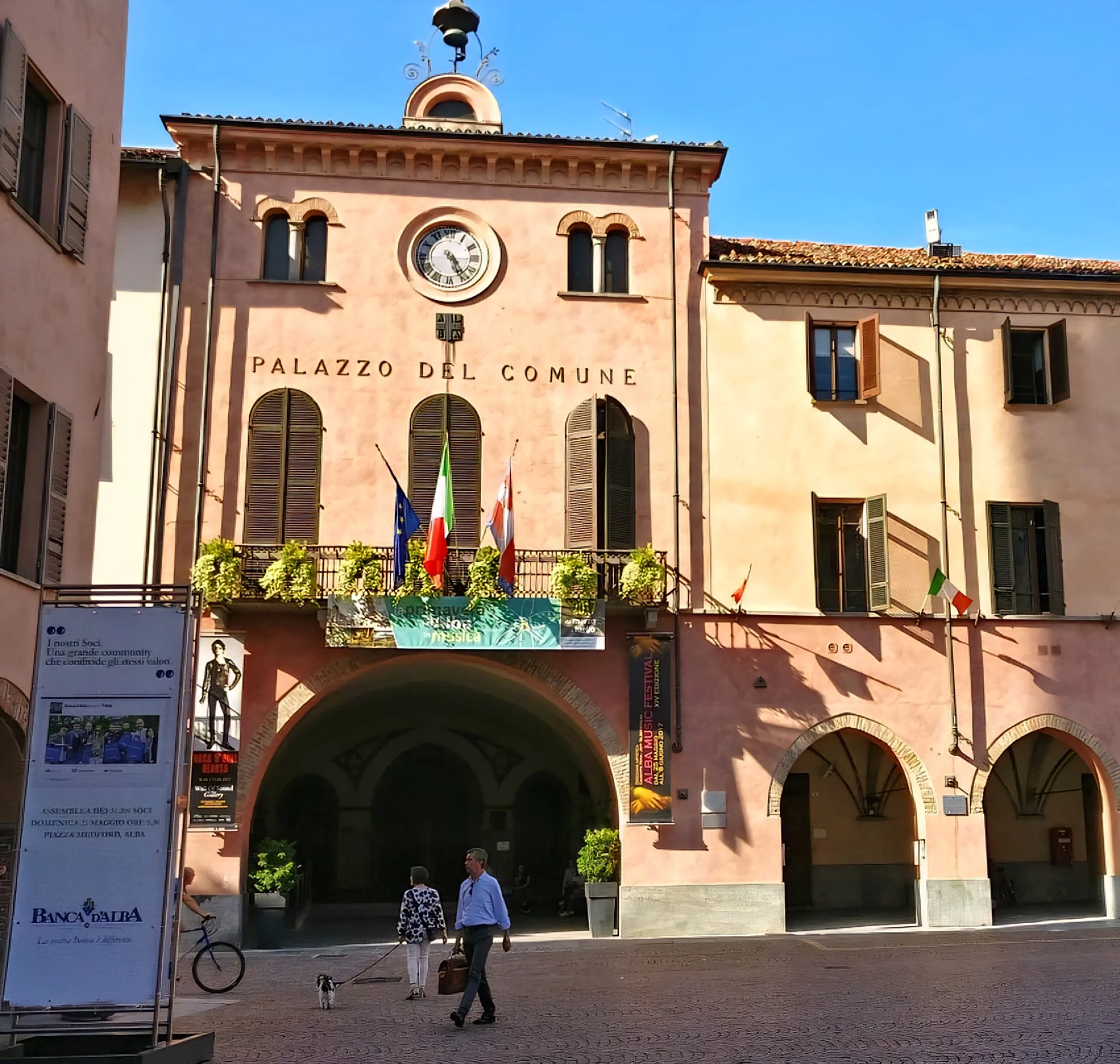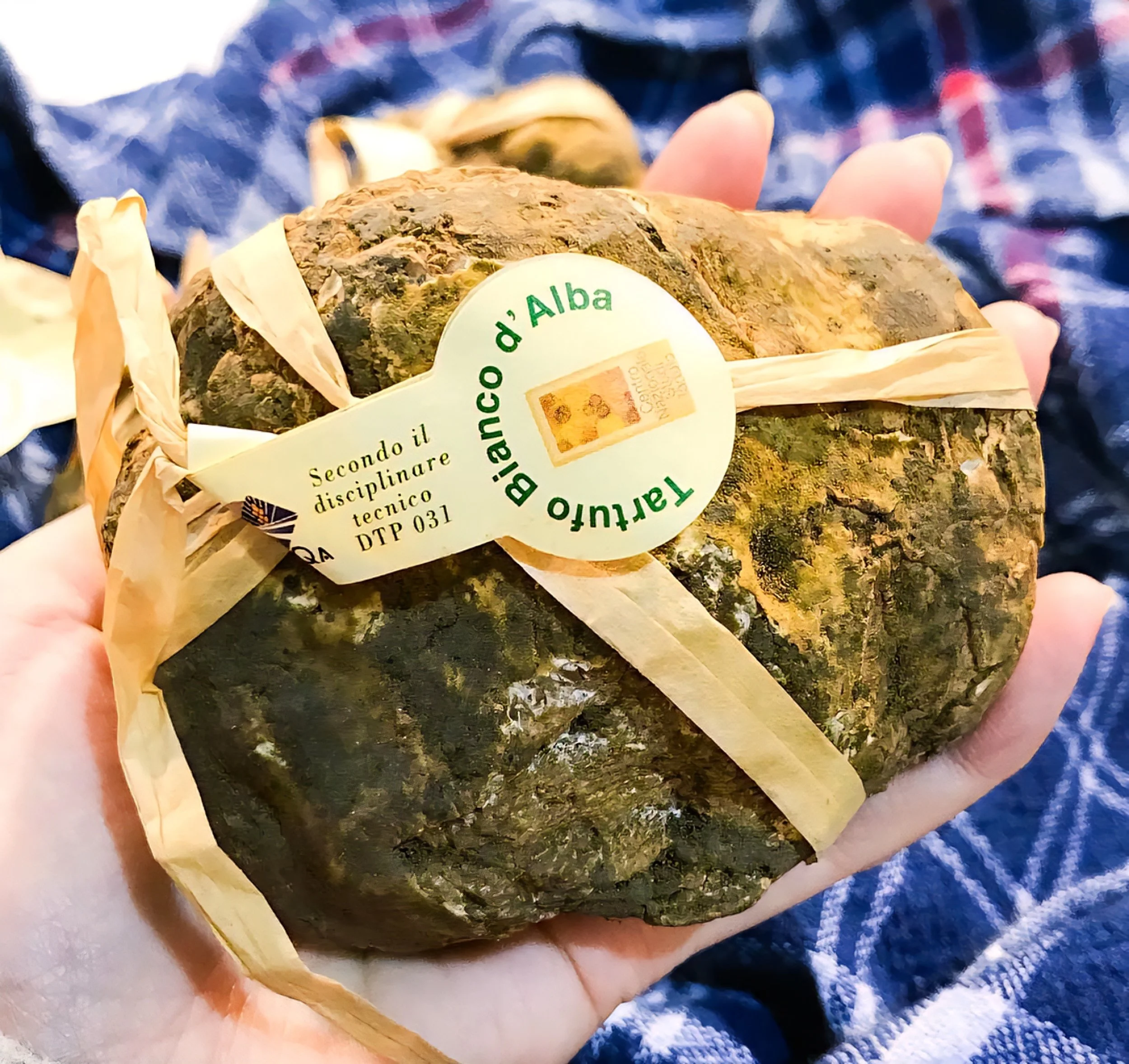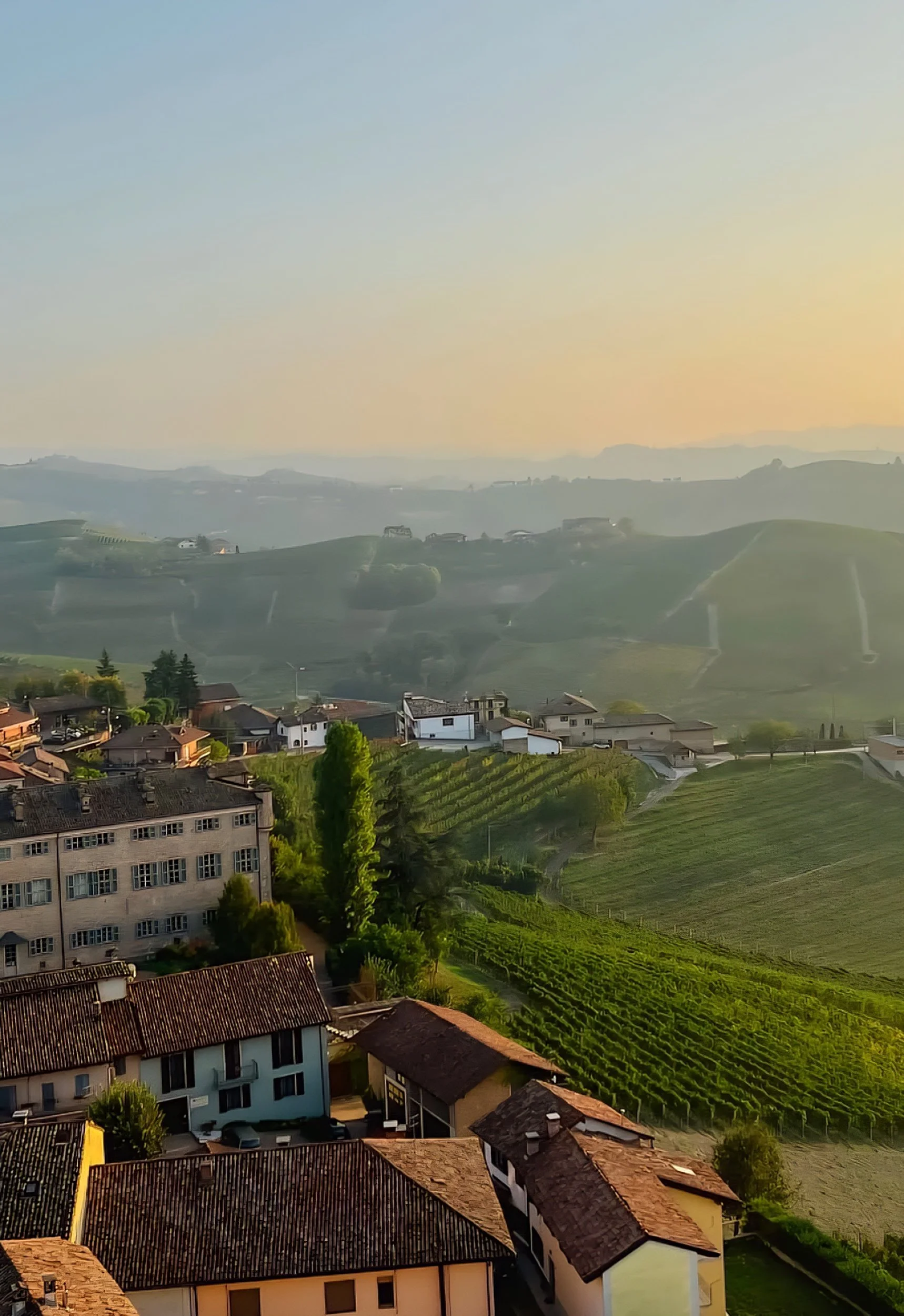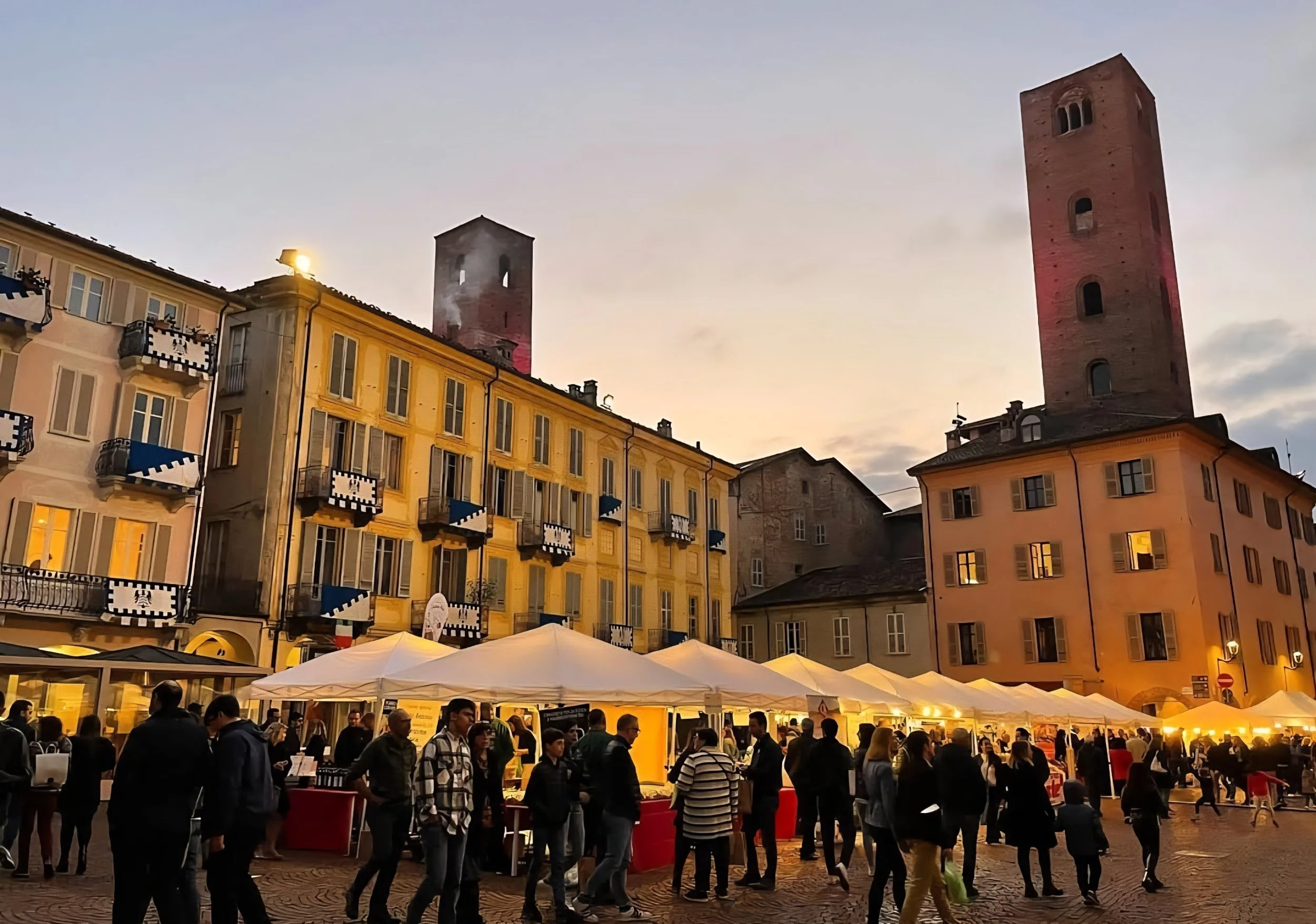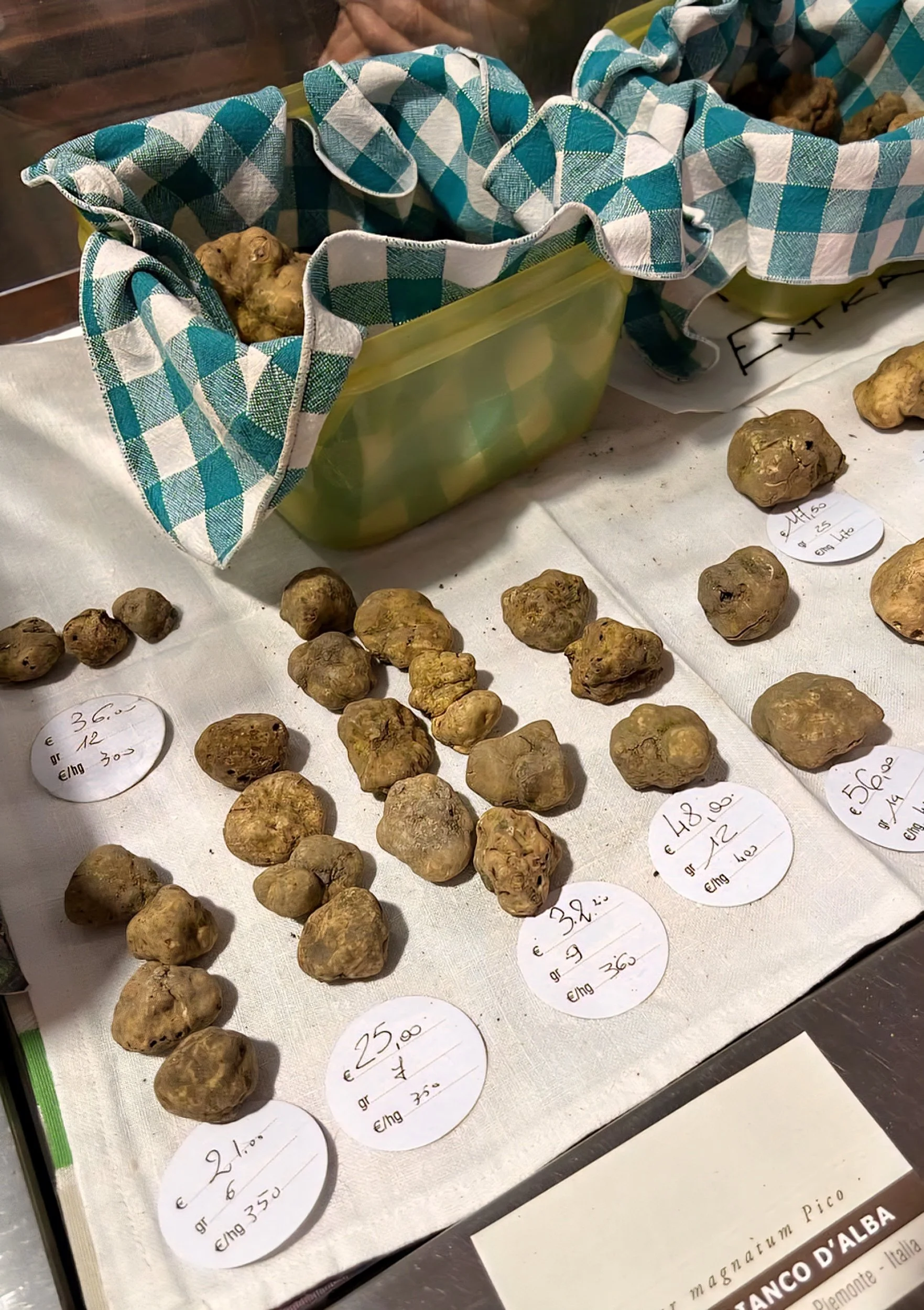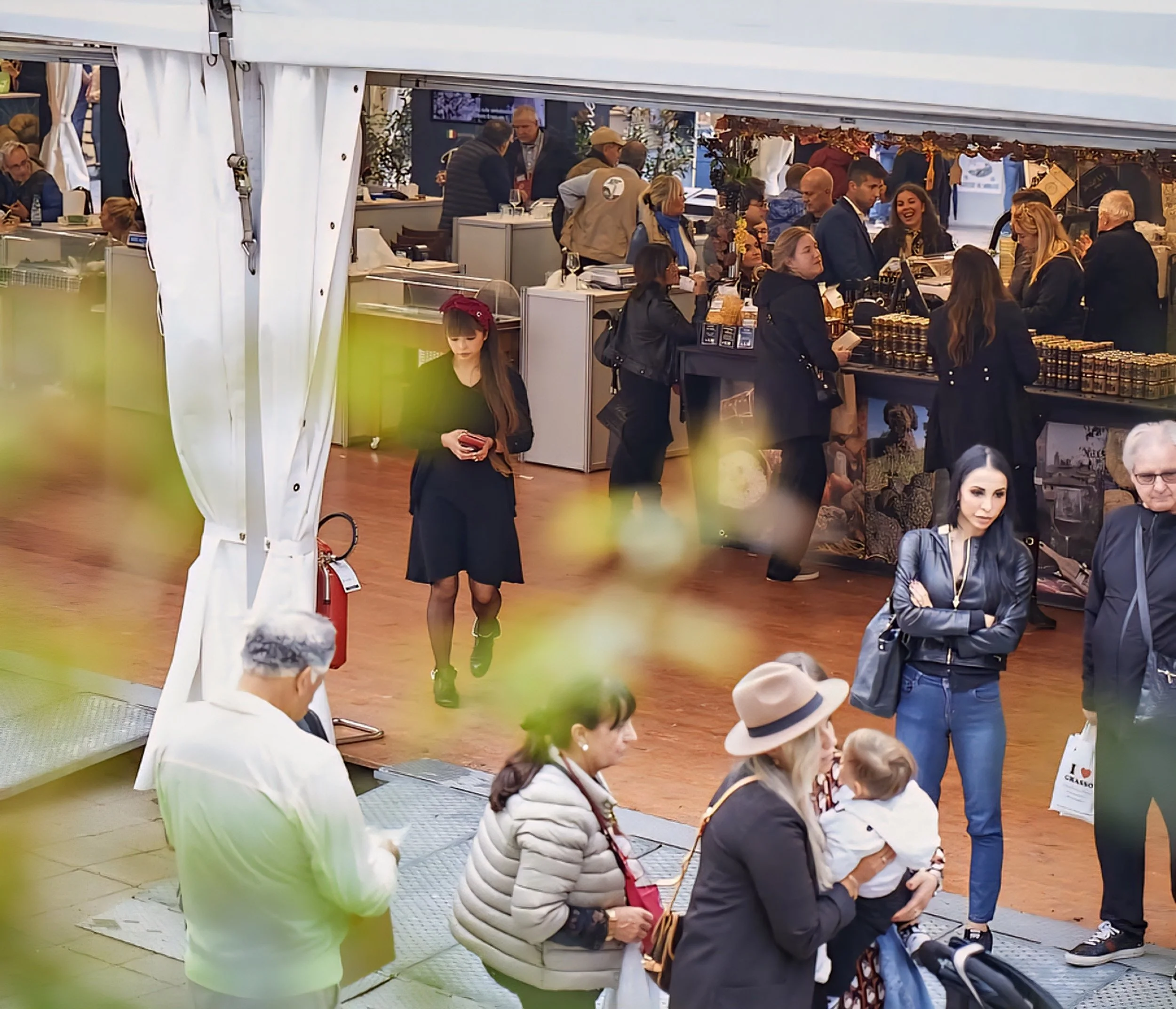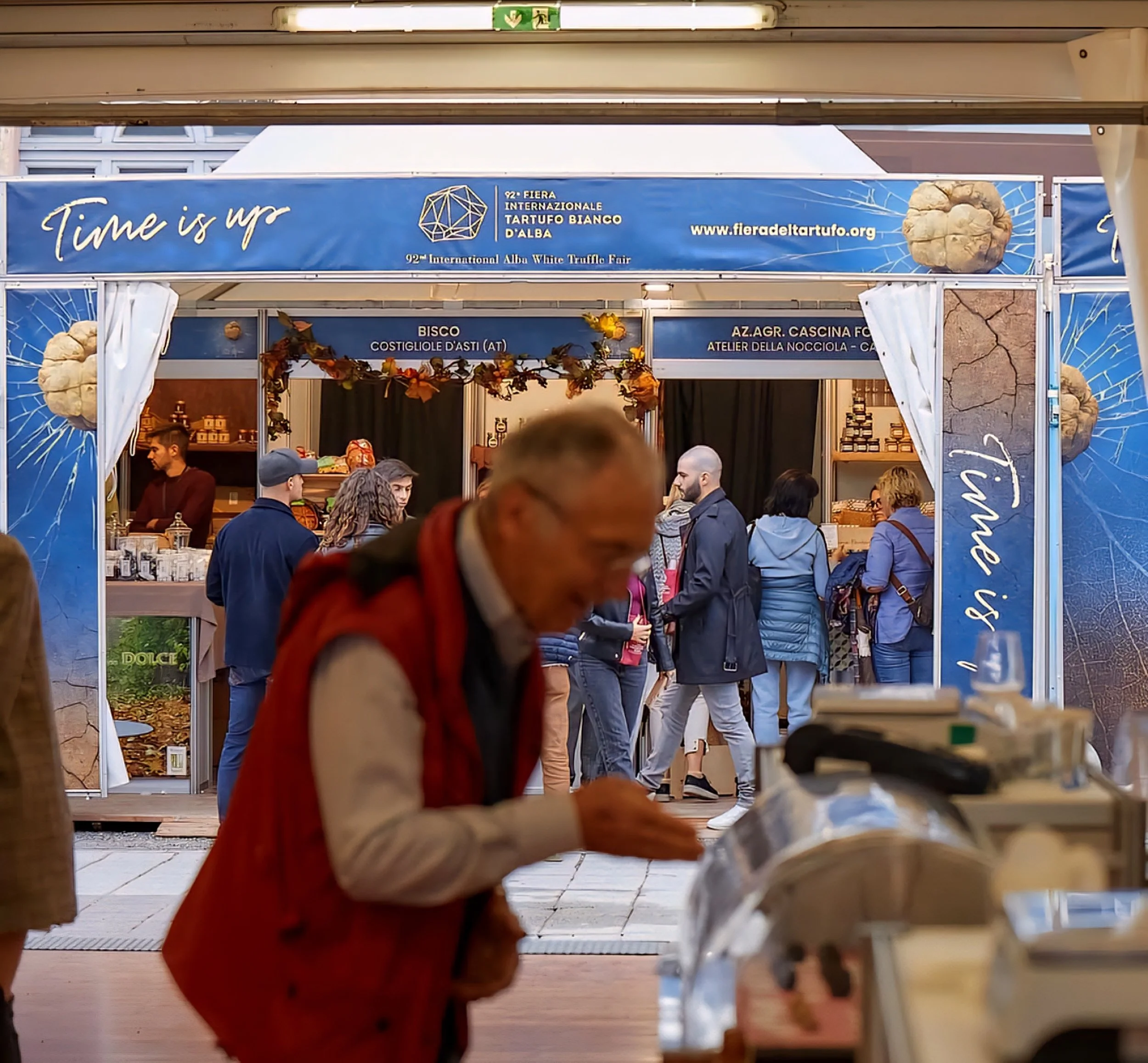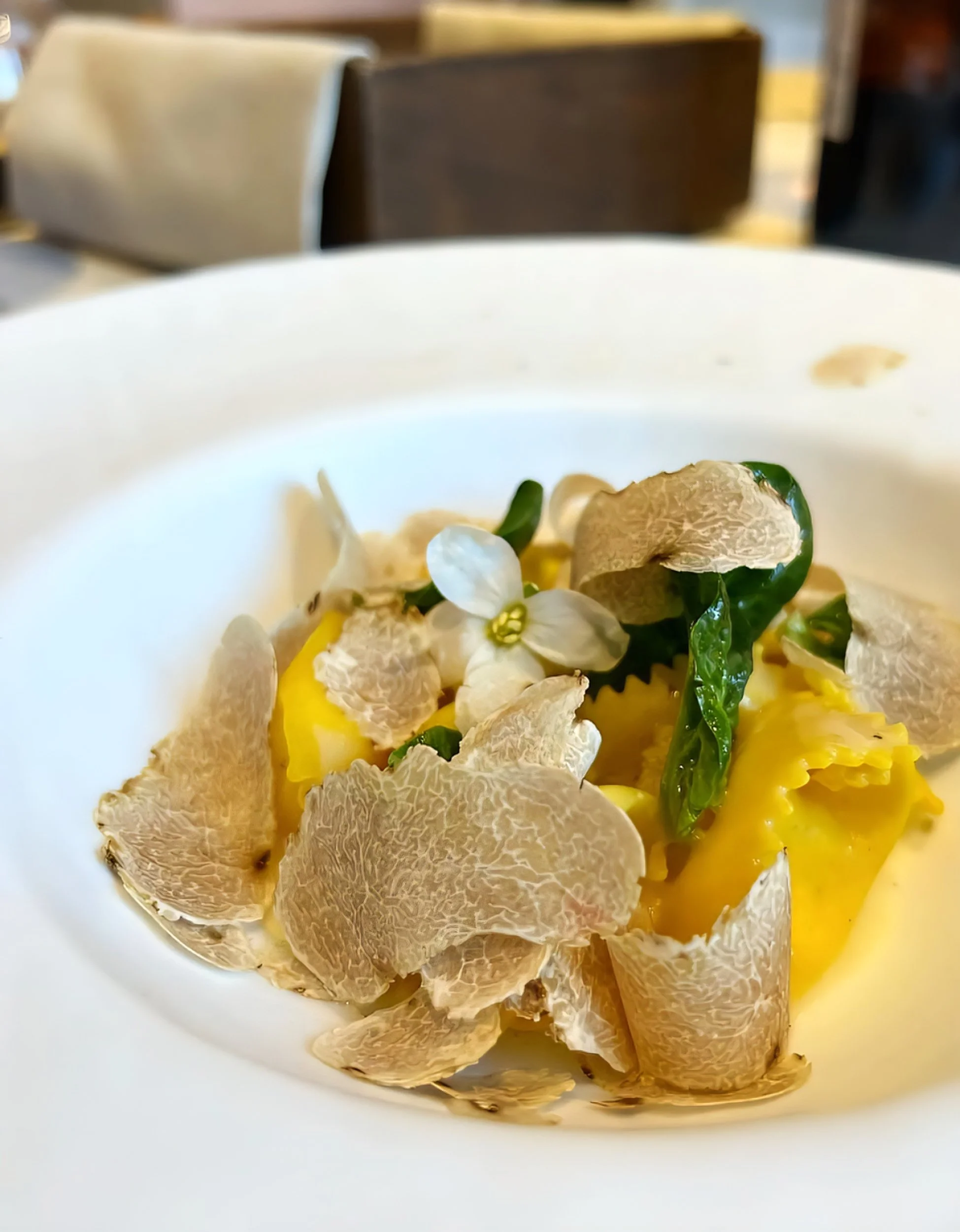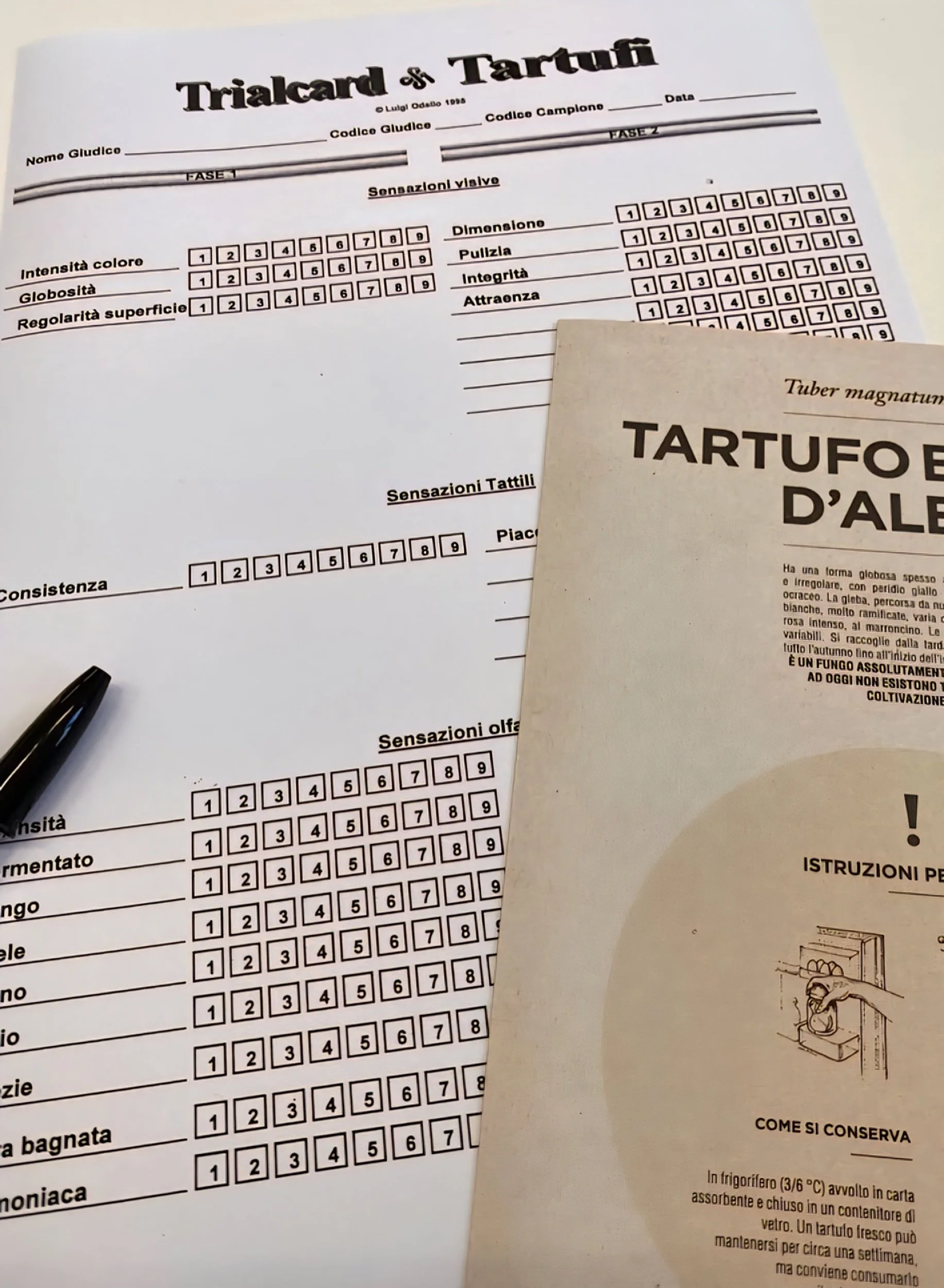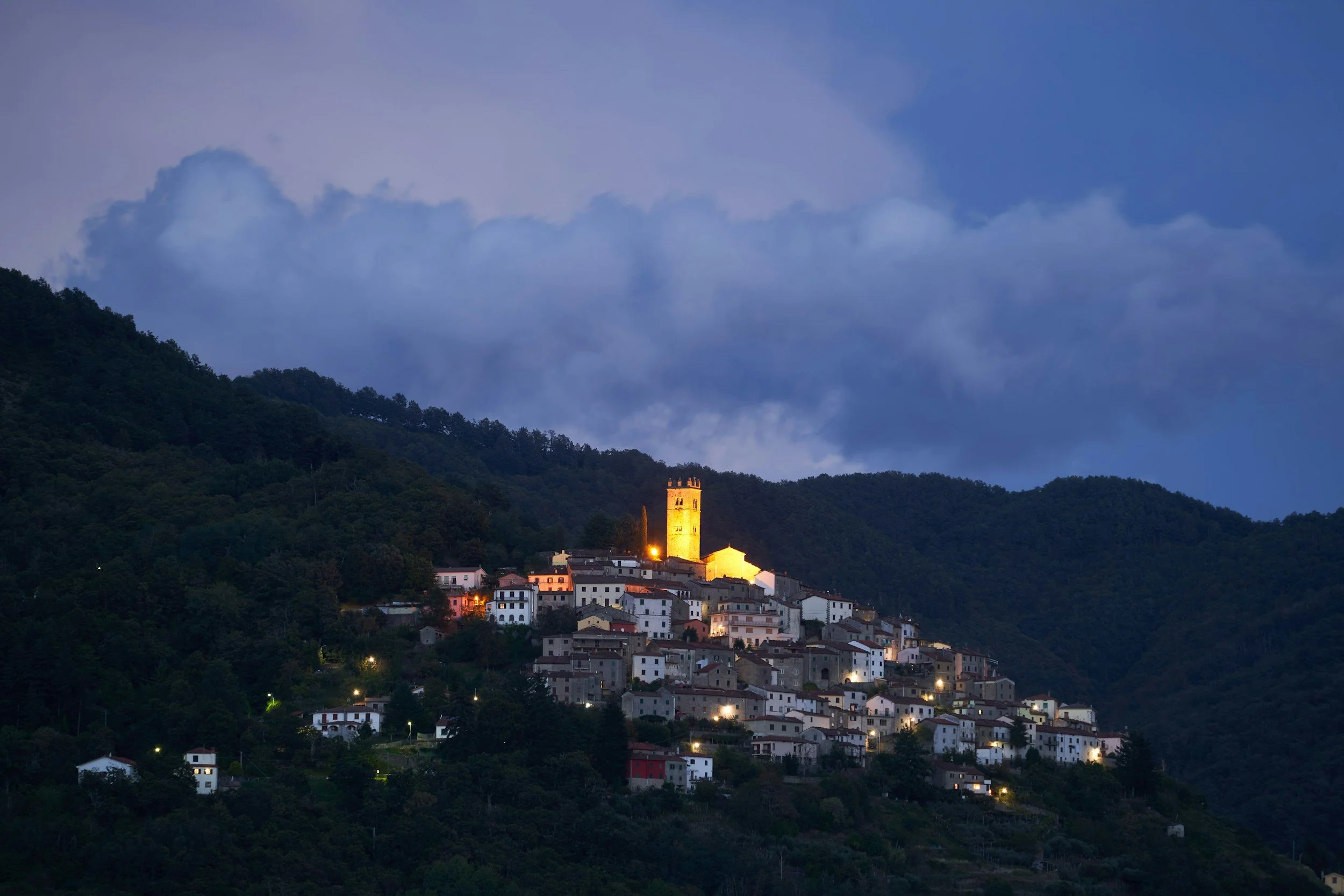Alba White Truffle Fair 2025: cozy towns + how to book tastings
Alba is a small town in northern Italy, located in the heart of the Langhe hills in the Piedmont region. It’s about an hour from Turin, and just under two from Milan, surrounded by a patchwork of vineyards, hazelnut groves, and forested hills. It’s not a place people stumble upon by accident. Most come here for a reason - and in autumn, that reason is usually white truffles.
From October 11 to December 8, 2025, Alba becomes the centre of the truffle world. The Alba White Truffle Fair (Fiera Internazionale del Tartufo Bianco d’Alba) is one of the biggest and oldest of its kind, drawing chefs, food lovers, wine makers, and curious travelers from all over. What makes this season interesting isn’t just the truffles - it’s how the whole area slows down a bit.
The mornings are calm, sometimes foggy, but usually clear by midday. You’ll hear leaves underfoot if you’re walking through the vineyards. Restaurants start bringing out heartier dishes again, think tajarin with truffle, stews, and seasonal soups with things like leeks and pumpkin.
The fair gets the attention, but it’s really the everyday pace that stands out in this region.
White truffles grow underground, only in very specific climates: shady oak forests, damp soil, cool nights. Piedmont’s Langhe region has exactly the right conditions, and has for centuries. The truffles here are still foraged by trained dogs and their handlers, called trifolai, often in the same spots their families have used for generations. The tradition is quiet, local, and deeply tied to the land. And you don’t need to be a foodie to appreciate it.
If you're visiting during the fair, you could stay in Alba - but we think it's better to base yourself in one of the nearby hill towns. Somewhere calm, with space to rest between visits to the fair. These villages (like La Morra, Neive, Barolo, or Monforte) are close enough to reach Alba easily, but give you the kind of setting that makes the whole experience more grounded.
Because here's the thing: the fair can be busy. Alba fills up fast on weekends. Hotels get booked months in advance. The market gets crowded. Restaurant tables disappear. If you’re not into big crowds or timed schedules, it’s easy to feel like you're in the wrong place.
But if you plan ahead (even just a little) and approach the trip more like a countryside break with a few truffle-focused outings, it becomes something else entirely. A walk through the woods on a truffle hunt. A wine tasting in a family-run cantina. A slow lunch in a village trattoria with fog on the hills outside the window. A few hours at the fair, and then back to quiet streets and a good book.
This is a guide to that kind of trip.
The one where the Alba Truffle Fair is part of your experience, not the whole thing. Where you can enjoy the best of the season (truffles, yes, but also slow meals, small towns, wine, and walks) without getting caught up in a frenzy of reservations and to-do lists.
We’ll share:
Where to stay nearby that still feels central but not chaotic
How to get to Alba and around the Langhe
What events and tastings are worth booking in advance
How to shape a few slow, satisfying days without overplanning
If you’ve ever been curious about truffle season but didn’t want to be elbow-to-elbow in a tasting hall, this is your moment!
Getting to Alba (and around the Langhe)
If you’re coming from outside Italy, the closest major airports are Turin and Milan. From there, you can either rent a car or take the train. Alba is reachable by regional train, though keep in mind that many of the surrounding villages aren’t directly connected - you’ll need a car, driver, or help from your host to get around.
For a slower trip, we suggest staying in one base and letting your hosts help arrange transfers or local taxis for tastings, truffle walks, and dinners. Most boutique hotels and agriturismos in this region are well-versed in helping guests navigate the fair season. And if you’re staying several days, many will even drive you into Alba for the day and pick you up after dinner.
Driving in this area is also manageable if you’re comfortable with winding roads and occasional fog in the mornings. Parking in Alba can be tight on weekends, but midweek it’s less of an issue.
Where to Stay Near Alba for the White Truffle Fair 2025
Alba gets crowded during the fair. And while the centre itself is beautiful and compact, it can feel a little overstimulating if you’re the kind of traveler who prefers quiet mornings and a softer pace. That’s why we always recommend staying just outside - in one of the nearby hill towns that still feel local, and where you can return at the end of the day to silence, stars, and maybe a glass of Barolo.
La Morra is a favourite. High on a hill and surrounded by vineyards, it has just enough going on: a few cafés, a couple of excellent trattorias, and views you’ll want to wake up to. It’s an easy base, and only a short drive to Alba.
Neive is another solid option. Quieter than Barolo but with a historic core that’s lovely to walk through, especially in the late afternoon when the light hits the stone buildings just right. There are family-run hotels and B&Bs tucked into the side streets, and most of them will help you arrange drivers or tastings if you ask in advance.
Serralunga d’Alba and Monforte d’Alba are both smaller still - each with a slightly different feel. Serralunga is tiny and steep, with a castle at the top and vineyards all around. Monforte has a little more energy, with a central piazza where you can sit under the trees with coffee or a glass of wine and just watch the day go by.
Barolo, of course, is known for the wine - but in October and November, it’s more than that. The tourists thin out, and what’s left is a working town with cellars, tasting rooms, and an autumn hush that feels good to return to after a full day in Alba.
Wherever you choose, book early. These towns don’t have many rooms, and they fill up fast once the fair calendar is announced. Look for places that include breakfast, have parking or transfers to Alba, and ideally offer views or a terrace where you can sit in the late afternoon without needing to go anywhere.
How to Visit the Alba White Truffle Fair 2025 (Without Getting Overwhelmed)
The Alba White Truffle Fair runs from October 11 to December 8, 2025, with events spread across nearly two months. But if you want to understand how the fair works (and how to enjoy it without feeling rushed) it helps to know the season.
Most of the key events happen on weekends. Saturdays and Sundays are when Alba gets busiest: food stalls line the streets, guided tastings pop up in piazzas, and the narrow roads around the historic centre start to fill with groups and tour buses. It’s lively, festive, and a little chaotic. For some travelers, that’s exciting. But if you prefer quieter days and a bit more space, there are ways to do it differently.
The fair’s main hub is the Truffle World Market, held inside the Cortile della Maddalena, right in the centre of Alba. This is where you can see, smell, and buy fresh white truffles, directly from local trifolai (truffle hunters) and their dealers. Prices change week to week depending on availability, but the market is open to everyone, and you don’t have to buy anything to enjoy it. Just walking through the space is worth it with its earthy aromas, soft lighting, hushed conversations about truffle quality. You’re close to the source.
There’s also a wine section, featuring bottles from across the Langhe (Barolo, Barbaresco, Dolcetto) and a rotating calendar of tastings, cooking demos, and education sessions. Some are free to enter, others require tickets. If you're interested in attending anything led by a well-known chef or sommelier, book early. Popular sessions (especially those with truffle-pairing menus or wine flights) often sell out several weeks in advance.
Don’t worry if you don’t speak Italian! Many events now include printed translations, and a growing number of sessions are either bilingual or English-friendly. But it’s always worth double-checking this before you book.
A few tips to make the fair easier (and more enjoyable):
Arrive early: The truffle market usually opens by mid-morning. Get there at or just after opening if you want to browse while it’s quieter. Crowds tend to peak between 11:30 am and 2:30 pm.
Go midweek if possible: While the weekends are the main draw, there are still events, wine tastings, and market stalls open during the week - especially in late October through early November, which tends to be peak season for truffle quality.
Stay outside the centre: If the weekend energy isn’t your thing, consider basing yourself in one of the nearby hill towns and just taking a day trip into Alba for the fair. You’ll have the calm of the countryside and still get to enjoy the best parts of the event.
Skip the crowds altogether: If you're not interested in squeezing through tasting tents or standing in long queues, skip the big weekend events and book a truffle hunt or private tasting through a local agriturismo instead. Many of them offer smaller, slower, more personal experiences.
The Alba White Truffle Fair isn’t a single event. You don’t have to go on one specific day to experience it - you just have to show up with a bit of curiosity (and maybe a light scarf), and enjoy this time of the year in Italy.
Booking Truffle Hunts, Tastings, and Autumn Dinners in the Langhe
One of the best ways to experience truffle season isn’t at a market stall - it’s by following a local trifolao and their dog into the woods. A proper truffle hunt is slower, quieter, and more personal than anything you'll find in Alba on a busy weekend. It’s also one of the few experiences where you really feel connected to the land, the season, and the rhythm of the region.
Most hunts are arranged through boutique hotels, agriturismos, or local tour guides, and they usually last around 1.5 to 2 hours. Some finish with a small lunch or tasting; others are more immersive and include a visit to a wine cellar or cheese producer afterwards. If you're staying in one of the nearby villages (Neive, Monforte d’Alba, or La Morra, for example), ask your host. Many have long-standing relationships with local truffle hunters who don’t advertise online but are open to visitors who come recommended.
If you’re looking for something smaller and more grounded, prioritize family-run agriturismos. These often organize truffle walks on their own land or nearby hills, and the pace tends to be slower - less about "show" and more about sharing how the process really works. The dogs are usually the star of the show, and you’ll learn how scent, season, and experience all come together.
What to expect from a truffle hunt:
Walks usually take place in the morning or late afternoon (when it’s cooler and the truffle scent is easier to track).
You’ll need sturdy shoes or boots, as the paths can be muddy.
Most guides speak enough English to explain the basics, but even when they don’t, the experience is still easy to follow.
Hunts run rain or shine, so bring a jacket just in case.
Truffle Tastings and Local Autumn Menus
Even if you don’t go on a hunt, you’ll find plenty of ways to taste truffles throughout the season - especially in osterias, wine estates, and restaurants in the Langhe.
Some places offer simple tasting menus: tajarin with butter and shaved white truffle, a truffled egg, and maybe a meat dish with seasonal vegetables. Others take it further with wine pairings and multi-course meals that lean more gourmet. In both cases, it’s best to reserve ahead, especially if you're traveling during the peak weekends in late October or early November.
Most village restaurants post seasonal menus online (or even just outside the door) and will often offer truffle by weight. Don’t be surprised if they bring the truffle to your table and shave it fresh in front of you. It’s part of the ritual.
If you’re more spontaneous, try dropping into a smaller spot for lunch rather than dinner. You’re more likely to find a free table, and the food is just as good. The mid-day meal is still treated seriously here, and often includes two or three courses even in simple places.
“Unusual Dinners” and Special Events
One of the more unique parts of the Alba Truffle Fair is its series of “Unusual Dinners” - ticketed events held in castles, historic villas, design spaces, and old wine cellars. Each one is different. Some feature guest chefs and structured courses; others are more like extended tastings in unique settings. You might find a 6-course pairing dinner in a Barbaresco winery one night, and a candlelit dinner in an old convent the next.
Tickets for these tend to go quickly… especially for anything tied to Michelin-starred chefs or rare wine tastings. They’re listed on the official fair calendar, and most can be reserved online in advance. It’s worth bookmarking the calendar and checking regularly if you’re aiming for something specific.
If you don’t want something so structured, look for autumn food festivals in the surrounding villages! Many have local sagre (small food events) on weekends, where you can eat regional dishes without needing to dress up or sit through a long meal.
Booking Tips for a Smoother Trip
Let your accommodation help – Most boutique hotels, agriturismos, and guesthouses are more than happy to help with booking a truffle hunt or meal. Some will even call ahead and reserve on your behalf, especially if you’re not comfortable navigating Italian websites or phone calls.
Be flexible with timing – If your dates are set, book early. If you have flexibility, aim for a weekday visit or later in the season, when crowds are thinner but the truffles are still excellent.
Don’t overpack your schedule – One truffle event a day is plenty. Leave space for a walk, a wine stop, or even just a nap. The food is rich, and the pace of the countryside rewards slowness.
Expect to pay more in Alba – Tastings and meals in the town centre tend to be priced higher than in the surrounding villages. For better value (and atmosphere), look to the hills.
Getting Around the Langhe Without a Car
A lot of people assume you need a rental car to visit the truffle fair. And while driving gives you the most freedom, it’s not the only way to experience the region - especially if you’re staying in one of the hill towns or coming just for a few days.
If you’re flying into Turin or Milan, trains run regularly to Alba, with a change at Asti or Turin Porta Nuova depending on your route. From Alba, you can explore on foot, join local truffle hunts that include transport, or hire a private driver for a half-day outing. It’s slower, but it works.
Some smaller towns like Neive, Barbaresco, or La Morra are reachable by regional buses or pre-arranged taxis. If you're staying in a boutique hotel or agriturismo, ask ahead, as they often have someone they trust who can pick you up from Alba station or drive you to a winery.
For day trips or tastings, wine estates and restaurants will often include pickup/drop-off if you’re booking a lunch or tour. This isn’t something they always advertise online, but it’s common practice in the area, and usually just takes an email or call to arrange.
If you’d rather not drive at all:
Base yourself in Alba and do truffle walks or dinners within walking distance
Plan one or two pre-booked excursions with included transport
Let your host help arrange transfers - they often know drivers who offer fair prices
And if you do rent a car, know that driving in the Langhe is straightforward, but some of the village roads are narrow and winding. Take your time. Parking is usually available outside town centres, and most places are walkable once you arrive.
This is a region made for slow travel. Even if you skip the car, you can still see a lot without rushing from one stop to the next…
Slow Travel During Truffle Season
The Alba White Truffle Fair can get busy - but it doesn’t have to be stressful. If you plan a little, stay somewhere just outside the town, and leave space between things, it’s actually a pretty relaxing trip.
You don’t have to go to every market or book yourself into every tasting or dinner. Honestly, some of the best parts are the quiet ones. A long lunch at a local trattoria. Walking through the vineyards after a truffle hunt. Sitting at a café with nowhere to be. It’s Italy, those in-between moments are kind of the whole point.
Truffle season in Alba isn’t just about the food. It’s also about the slower pace, cooler air, and having time to enjoy it all without rushing.
If you’re travelling solo or just want a trip that doesn’t feel packed, this is a good one. Book a few things you’re genuinely excited about, keep the rest open, and let it unfold from there. That’s usually when the good stuff happens anyway!
If You’re in the Mood for More Autumn Flavours
October and November are such good months for slowing down. The crowds are gone, the food gets richer, and even the light feels a little softer. If you’re already thinking beyond Alba, here are a few more autumn trips we love:
In Normandy, cider takes centre stage. The backroads along the cider route are full of quiet farm shops, tastings, and cafés that make you want to stay longer than planned. You can read more about it in our Normandy Cider Route guide.
In Umbria, olive oil season starts in early November. It’s less polished than Tuscany, but that’s part of the charm. Think village markets, long countryside walks, and warm tastings in old mills. We’ve shared our favourites in this Frantoi Aperti guide.
If you’re curious about wine regions that don’t always make the headlines, we’ve put together a round-up of lesser-known wine destinations in Europe - ideal if you’d rather skip the big tours and talk to the winemaker themselves.
And if you want to stay in Piedmont a little longer, we’d definitely recommend visiting a few of the Langhe wine villages. La Morra, Barolo, Neive... all walkable, all beautiful, and perfect for slow travel in autumn.
FAQ: Planning Your Trip to the Alba White Truffle Fair 2025
When is the Alba White Truffle Fair in 2025?
The 2025 fair runs from October 11 to December 8, with most of the bigger events and markets happening on weekends. If you’re visiting for food tastings or the World Truffle Market, aim for a Saturday or Sunday. If you’d rather avoid the crowds, go midweek - Alba is quieter but still very much in truffle season.
Is it worth visiting Alba during the truffle fair?
Yes! If you’re into food, wine, or just a slower kind of travel, it’s one of the best autumn experiences in Italy. The fair isn’t just about markets; it’s a whole seasonal atmosphere: crisp mornings, hills turning gold, meals that feel both local and celebratory. It’s not overly touristy, especially if you stay in the nearby villages.
Do I need to book Alba truffle tastings in advance?
You really do. Popular restaurants and wine estates get fully booked weeks in advance - especially on fair weekends. If there’s a place you’re excited about, reserve early. For smaller osterias and weekday lunches, you might get lucky walking in, but it’s always better to check ahead.
How do I book a truffle hunt near Alba?
Start by asking your accommodation. Many boutique hotels and agriturismos have direct relationships with local truffle hunters (trifolai) who don’t advertise online. These are usually quieter, more authentic experiences. Some wine estates and travel companies also offer truffle walks with lunch or tastings included - just be sure to check what’s private vs. group-based.
Can I visit the Alba Truffle Fair without a car?
Yes, but it takes a bit of planning. You can reach Alba by train from Turin or Milan (usually with one connection), and most of the town is walkable. If you want to explore the surrounding villages or join a truffle hunt, your host can usually help book a driver or arrange transfers. It’s very doable without renting a car, especially if you’re staying for just a few days.
What should I wear to the truffle fair in autumn?
Layers. Mornings and evenings can be chilly, but afternoons are often sunny and mild. Comfortable shoes are a must - whether you're walking through cobbled streets or forest paths. And if you're heading into the woods for a truffle hunt, bring something you don’t mind getting a bit muddy.
Is the Alba Truffle Fair good for solo travelers?
Absolutely. There’s no pressure to be part of a group. You can spend an afternoon tasting wines at your own pace, join a truffle hunt with others, or wander through the markets and just take it all in. Most restaurants are happy to serve solo diners at lunch or dinner, and the overall vibe is relaxed and welcoming.
Are there vegetarian or non-truffle options during the fair?
Yes, though it depends where you go. Truffle-focused menus tend to include meat, but many places offer seasonal dishes - pumpkin risottos, gnocchi, roasted vegetables, cheeses, and local wine pairings. If you’re not into truffles, you’ll still eat very well here. Just let your server know and they’ll usually guide you through the options.

